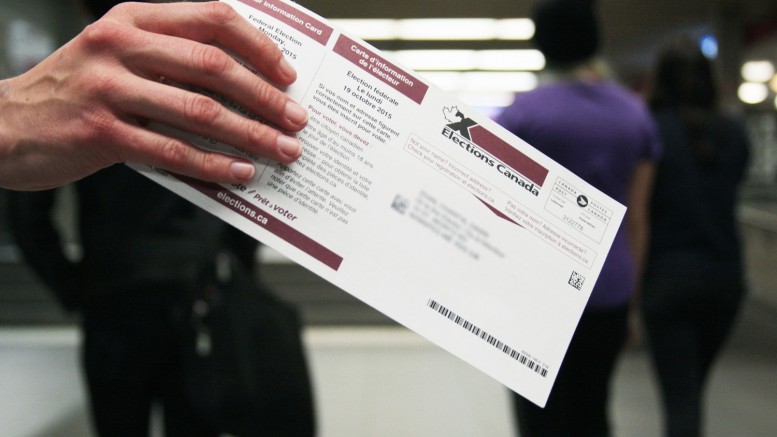One political advocacy group has sought creative ways to combat political apathy and boost electoral participation among youth.
In the 2011 federal election, voter turnout for those between the ages of 18 and 24 years old was just 38.8 per cent, and 45.1 per cent for those ages 25 to 34, according to Elections Canada.
Grace Kennedy, a Manitoba native in her second year of a post-degree program in social work at McMaster University, wanted to reverse historical trends and raise those numbers for the upcoming federal election. As founder and executive director of Be the Vote, Kennedy aims to politicize youth and increase their electoral participation across the country.
“There’s a lot of initiatives that pop up around elections to get youth to vote, but there’s nothing that really sticks around, year-round, to try to advocate and encourage youth to get more involved in politics 365 days a year,” Kennedy said.
Upon her return to Winnipeg in late 2014, Kennedy held a meeting with a number of interested people from the University of Manitoba and across Winnipeg who also wanted to see this happen.
“Basically, we formed a group. A lot of people are still involved at the advisory level, and then I found peers when I was at McMaster to actually get involved in operations and incorporate as a not-for-profit,” Kennedy said.
By March of this year, Be the Vote, a non-partisan initiative to increase youth voter turnout, was up and running.
Kennedy and her team have been out in the community in the lead up to the election, doing their best to promote youth engagement in the political process. They attended major events, such as TEDxYouth@Jamesville in Hamilton, Ont. and Pride Toronto, to spread the word.
Kennedy also gave a presentation about her youth engagement strategy at the Hamilton Town Hall on electoral reform.
While the group’s outreach efforts have had some success, Kennedy acknowledged the fact that there is still a ways to go.
“It’s very easy to get the kudos from those who think it’s really commendable that we’re working on this, but we’re very sensitive to the fact that it takes so much more,” Kennedy said.
“I think what we’ve learned is that addressing this probably requires something so much larger than what we’re able to do, but at the same time, we’re not discouraged.”
To keep youth commitment up, the organization has been emphasizing their awareness campaigns.
“The biggest project we have on the go right now is pushing out our public service announcement video campaigns on ad space through YouTube and Facebook,” Kennedy said.
The goal with the online advertisements is to provide a subtler pull to those who may not otherwise be interested in getting out to vote and learning more about the long-term impact of their electoral involvement.
Be the Vote also has their own YouTube channel under the same name. They have been publishing weekly videos over the past month to provide some background about each major federal party’s platform and other pertinent information for youth voters.
“To be honest, and I’ll agree, youth are most comfortable at our computers, watching videos, and that’s where we’re used to getting messaging,” Kennedy said. “It’s just about being respectful of that. And so, why not have stuff on YouTube?”
Overall, Be the Vote is trying to encourage inclusivity for the youth electorate.
“It just comes back to having a more inclusive political society in Canada,” Kennedy said. “By virtue of the fact of more youth voting, we would hope to see politicians try and engage youth in innovative ways that are meeting youth where they’re at.”
To learn more about the Be the Vote, go to www.bethevote.ca


